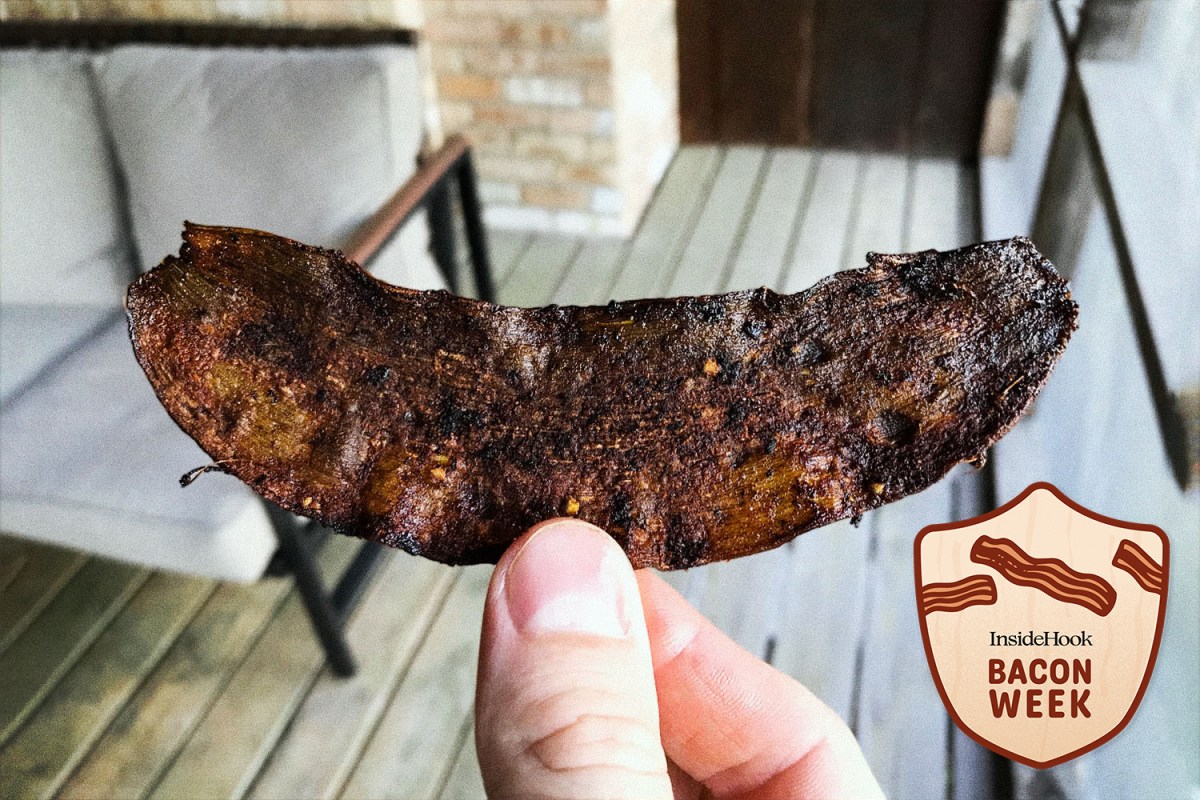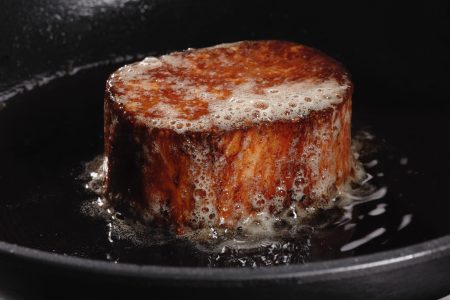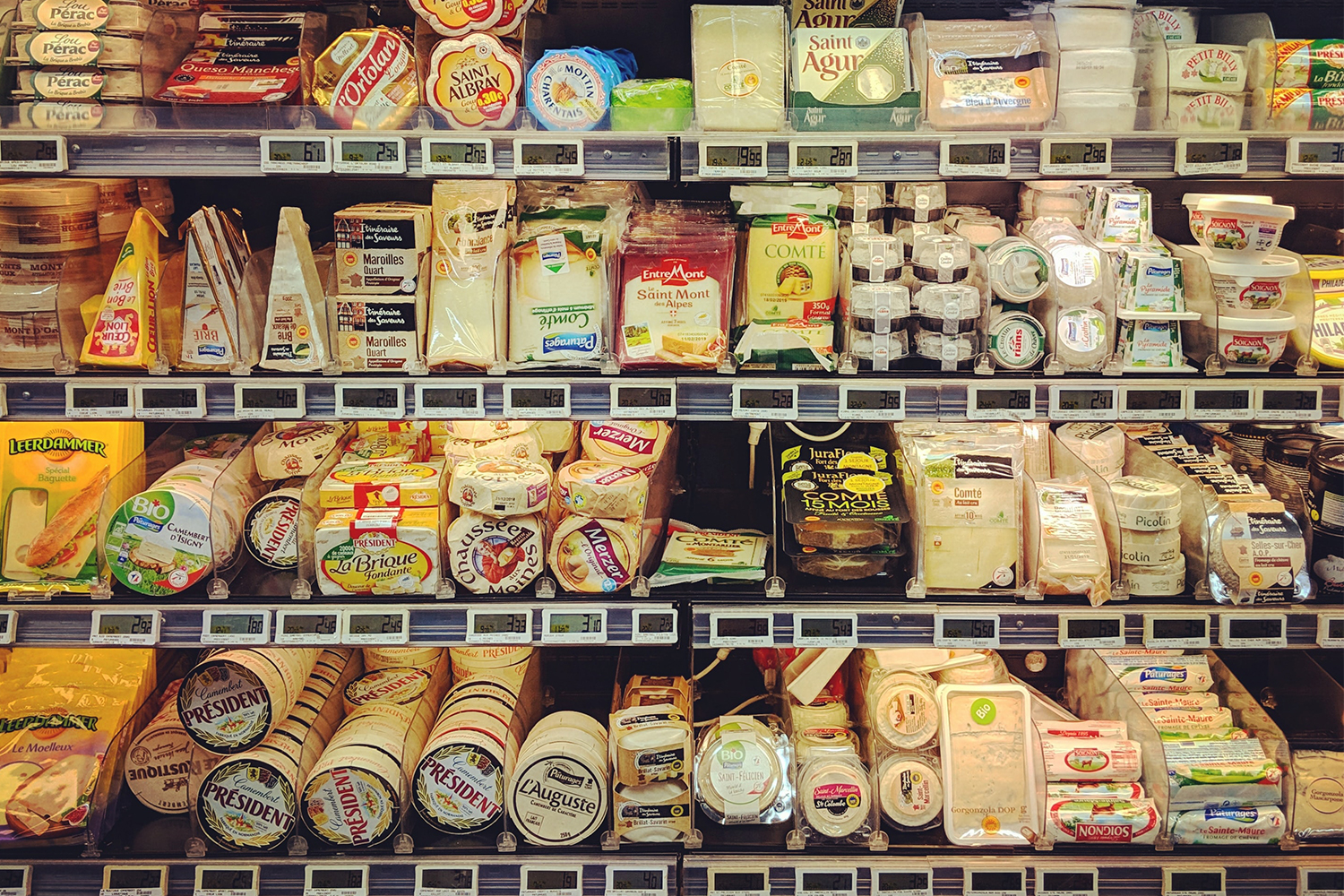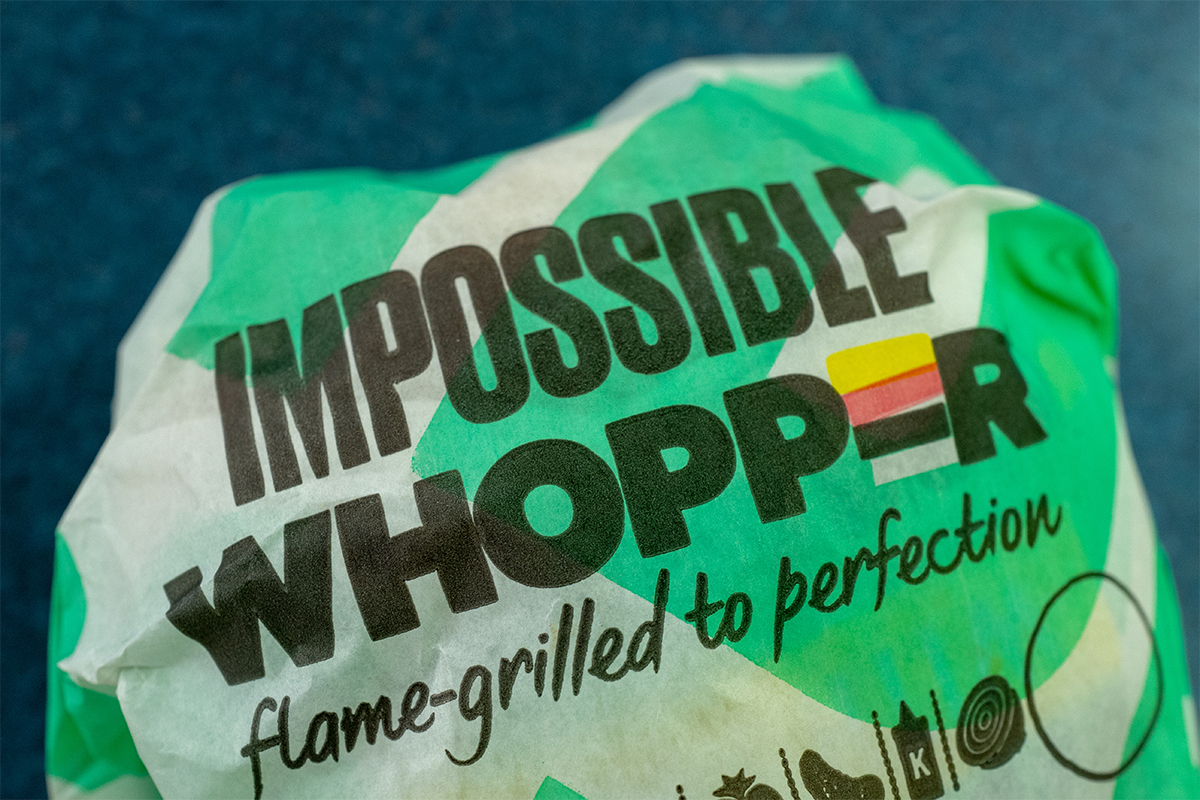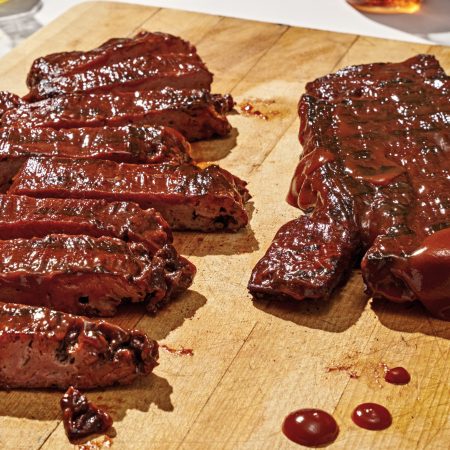International Bacon Day is an unofficial holiday that takes place on the first Saturday of September. But we think bacon deserves more — hence, InsideHook’s Bacon Week, a collection of stories old and new celebrating salt-cured pork (and in some cases, non-pork or even non-meat, like banana peel bacon) in all its sizzling glory.
When I was a kid, I didn’t like pickles, cantaloupe or tofu. Whenever my family drove through McDonald’s or Burger King, I would remind my parents to ask for a cheeseburger without pickles. In the summer when my two brothers gorged on juicy cantaloupe, I gladly stuck with watermelon, seeds being a minor inconvenience. And I’ll never forget the fateful night when my dad, an adventurous chef by Midwestern suburb standards, served a meal with a jiggling slab of tofu as the main course. I gladly ate my steamed broccoli that night.
Then I grew up, and all my childhood culinary dislikes melted away. As it stands today, I love pickles, have eaten tofu prepared in dozens of ways (as I adhere to something like a pescatarian diet) and won’t shy away from the orange melon in a fruit bowl. That’s a convoluted way of saying I don’t consider myself a picky eater. It’s also — along with the added caveat that I haven’t eaten real bacon in approximately a decade — a way of explaining why I was so willing to prepare, cook and eat a polarizing and admittedly revolting-sounding recipe called banana peel bacon.
You read that right: banana peel bacon. As in, you eat the actual banana, keep the slimy peel, let said peel soak in a marinade, cook it in a skillet and end up with something resembling the crispy, cured pork breakfast staple. That’s the idea, anyway.
This particular meat imitator has been making the rounds in various corners of the internet, from vegan and vegetarian recipe sites to Gen Z’s favorite Chinese data harvester, TikTok, but I first heard about it on my favorite cooking podcast, Milk Street Radio. During one call-in segment, a listener said they felt bad about throwing away so many banana peels and asked if there was anything they could do with them. Co-host Sara Moulton recommended banana peel bacon. In a later episode, the same listener called back and said they tried it without much success, though they didn’t offer many details. I wasn’t satisfied with that ambiguity, or the reports I read online, so I took it upon myself to do some recipe research and make it myself.
A few things occurred to me right away, and likely are on your mind as you try to process the prospect of chewing on a bitter, stringy banana peel.
First, is this meatless endeavor really worth it? We accept all manner of food waste, from apple cores to animal bones to broccoli stalks, and even if some waste-conscious home cooks find creative ways to use these normally discarded pieces (bones for broth, stalks in stir fry), are banana peels worthy of such expenditure? After all, don’t animals discard the peel when they eat the fruit in the wild? Isn’t that the way of the world? For vegetarian and vegan eaters, don’t we have enough options for meat-free bacon today that no one should have to stoop to this dumpster-diving-adjacent scheme? As for the animal eaters, has the faux-meat crowd finally taken things too far?
I did eventually find answers to all these questions, after I whipped up two batches of banana peel bacon, of course.
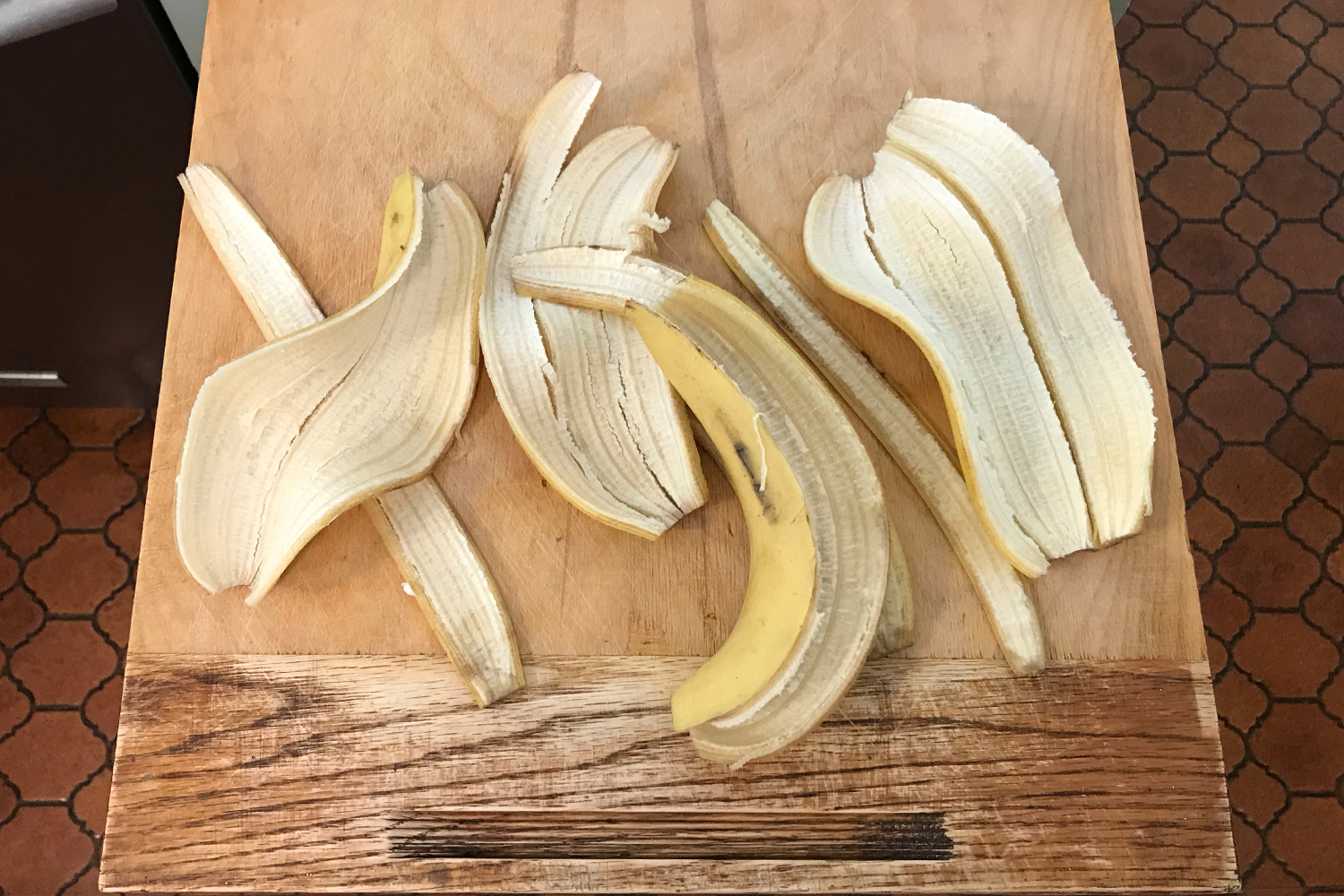
How to Make Banana Peel Bacon
Not being much of a recipe creator myself, I simply tried two that seemed promising. The first is from Charles Hunter III, the personal chef behind Nashville in-home catering company and accompanying blog The Salted Table. If you’ve heard of banana peel bacon before, his recipe is likely the cause, having gone somewhat viral in 2021. But his marinade ingredient list is on the complex side, including things like liquid smoke, so in the interest of offering a more accessible take (that doesn’t require ingredients that will afterwards serve only to collect dust), I also tried a simple four-part marinade from vegan blogger Sam Turnbull of It Doesn’t Taste Like Chicken that was published a couple years ago.
Juicy Marbles’ Plant-Based Filet Mignons Don’t Taste Like Steak, And That’s Okay
Founded by a team of meat-eaters and vegans, Juicy Marbles plans to roll out meatless tenderloins and more whole cutsThe basic gist is the same with both, but there are a few important factors to note upfront. You should buy organic and fair-trade bananas if possible, due to the heavy reliance on pesticides and often poor labor practices. If that’s not possible, be sure to vigorously wash and scrub the exterior of the peels. Also, if you don’t eat meat, note that Hunter uses vegan Worcestershire sauce (it’s relatively common, check your local grocer), but meat eaters curious to try this recipe can go ahead and use a regular variety. Lastly, the best peels are yellow with a few brown spots on them, as those are more sugary. Don’t you dare use green peels.
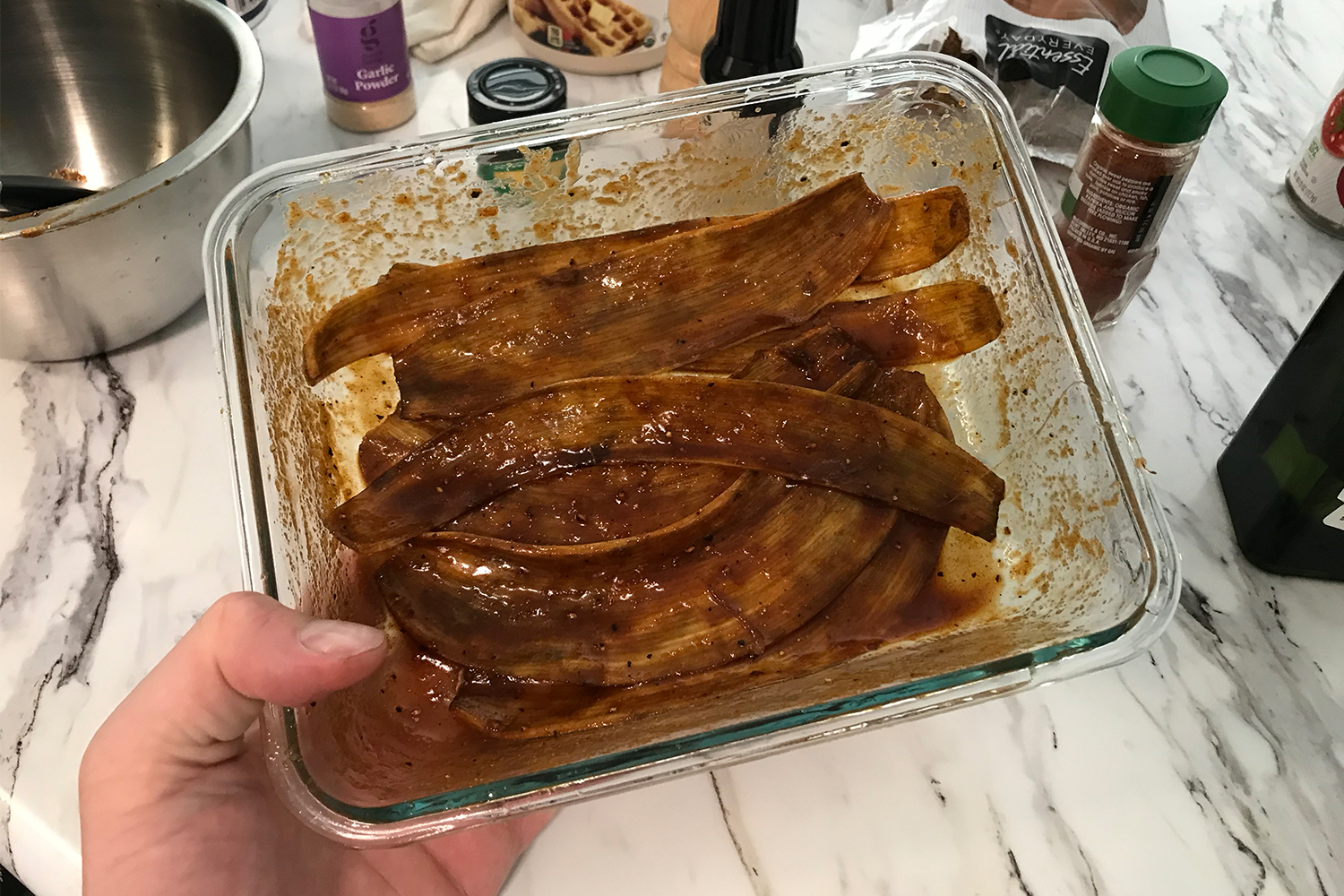
OK, now for the fun part. Here’s the basic recipe: Peel the bananas into three or four strips (I had better results with larger pieces of peel vs. skinnier ones, because they shrink in the pan); scrape out the white pulp from the inside of the peel with a spoon; mix the marinade; place the peels flat in an air-tight container and pour on the mixture; let sit for two to three hours in the refrigerator (though you could go as little as 30 minutes); cook in a skillet with a little oil, turning every couple minutes; remove when they’re browned and slightly crispy (especially the yellow exterior); cool on a wire rack and serve immediately, either solo or in a dish (like a BLT).
I must admit that when I picked up the first piece of banana peel bacon after it had cooled slightly, even though it had undergone a miraculous visual transformation into something legitimately resembling bacon (or at least charred turkey bacon), my brain was waiting for the first bite to taste like the rubbery, stringy, uncooked peel that I started with.
Instead, my first bite tasted — believe it or not — so close to bacon that anyone in their right mind would call it a gimme. My first impression was of a jerky that you’d find in a plastic bag at a gas station, the sinewy nature of the peel actually resembling meat after it’s been cooked. However, after eating a few strips I associated it more with a crispy piece of pepperoni on a pizza. Smoke was the dominant flavor, as the first recipe I tested was from Hunter, followed by salt. Turnbull’s recipe came out even saltier, so much so that I would use low sodium soy sauce and potentially even cut that down too. But despite having fewer ingredients, her recipe didn’t taste wildly different from Hunter’s, which left me with only one logical conclusion: banana peel bacon, if you prepare and cook it right, is unquestionably palatable and worthy of the name, with or without magic ingredients like liquid smoke.
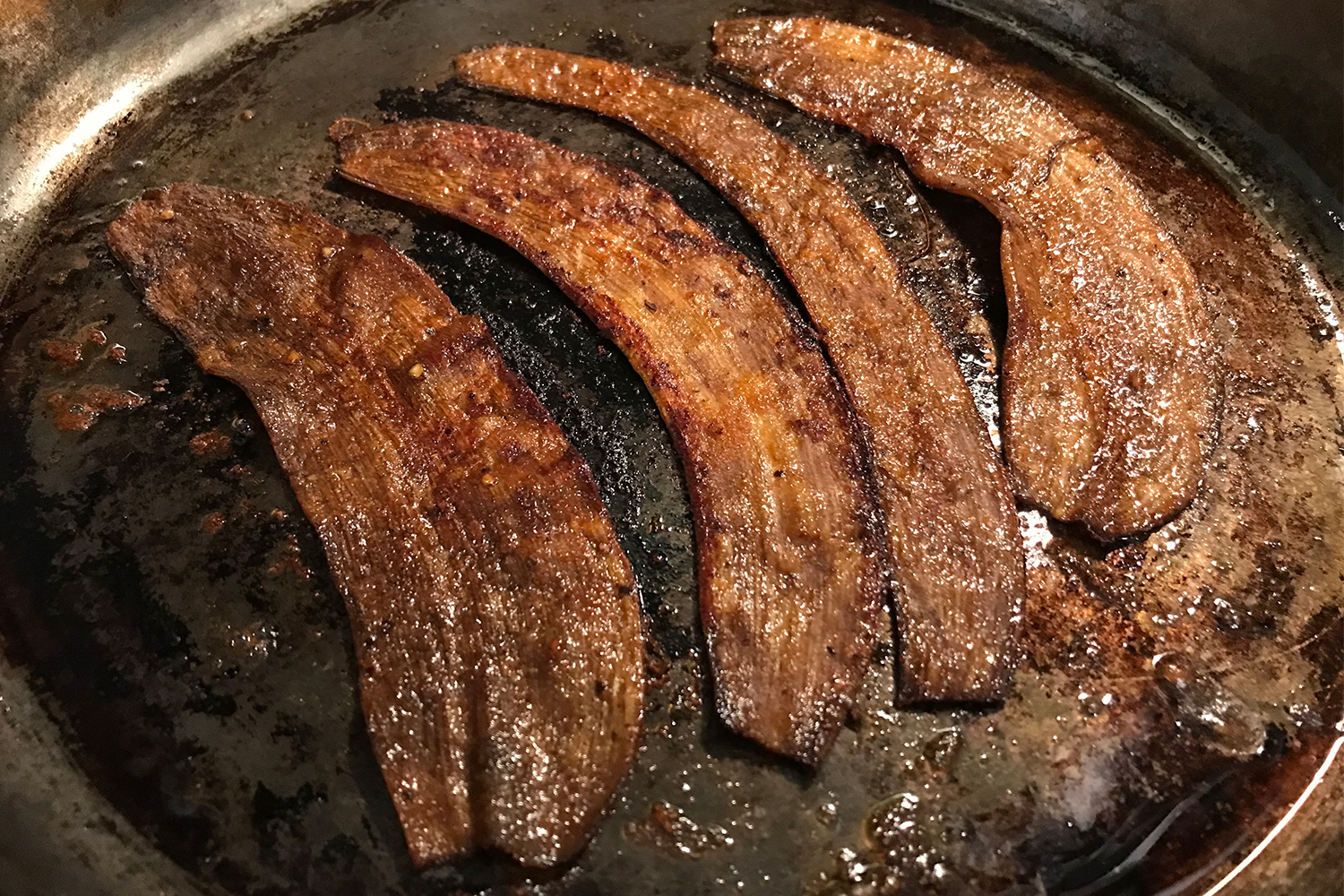
Lessons and Misconceptions From the Fake Meat
Do I think any of you bacon lovers would be fooled by banana peel bacon the same way part-time cattle breeder Glenn Beck was fooled by the Impossible Burger? Not a chance. It’s too thin and the telltale fat just isn’t there. But do I seriously think that vegans, vegetarians, those who care about climate and food waste, and even certain unabashed meat-eaters would enjoy a slice of the fruit-turned-faux-meat once in a while? If we remove the stigma that comes with a phrase like “banana peel bacon,” yes, I think it’s certainly possible.
The most interesting point of contention when I brought this recipe trial up to friends and family wasn’t necessarily the shock factor. Rather, it was the idea that if animals discard banana peels in the wild, are they even safe for human consumption? The short answer is yes. Also, if you’re still under the impression that monkeys and apes eat the same bananas that you and I pick up for a couple bucks at the grocery store, you’re sorely mistaken. But even if the other animals that do eat wild bananas don’t eat the peels, they are perfectly fine for you and me. Furthermore, when banana peels are discarded in the wild, they decompose naturally; when we eat and discard banana peels, we’re contributing to the introduction of massive amounts of chemicals into nature (when buying traditional bananas vs. organic), and then we’re contributing to greenhouse gas emissions (when that food waste goes to landfills instead of being composted).
So we come to the final question: Is it worth it? To spend a few hours, including marinating time, turning something you’ve thrown away and never thought of again for your entire life into a food product that can kinda-sorta pass as bacon in an avocado-mayo slathered BLT?
That goes back to my original point. We as Americans in the 21st century, especially those with plenty of disposable income, are picky eaters, not because some of us don’t like pickles and others don’t like tofu, but because even though we know that meat consumption is a big contributor to climate change, many refuse to switch to a vegetarian or vegan diet, or even eat less meat. We’re also picky eaters in that we throw away a lot of food instead of eating intelligently; 30-40% of the food supply in the U.S. ends up as food waste, and as I mentioned before, when that food waste goes to landfills it can become a large emitter of methane (if food waste was a country, it would be the third highest emitter of greenhouse gases).
Will a piece of banana peel bacon solve these problems? Of course not. But can the idea of banana peel bacon — that your meat cravings and food waste can be solved through open-mindedness and culinary creativity — solve them? I believe so.
Join America's Fastest Growing Spirits Newsletter THE SPILL. Unlock all the reviews, recipes and revelry — and get 15% off award-winning La Tierra de Acre Mezcal.
